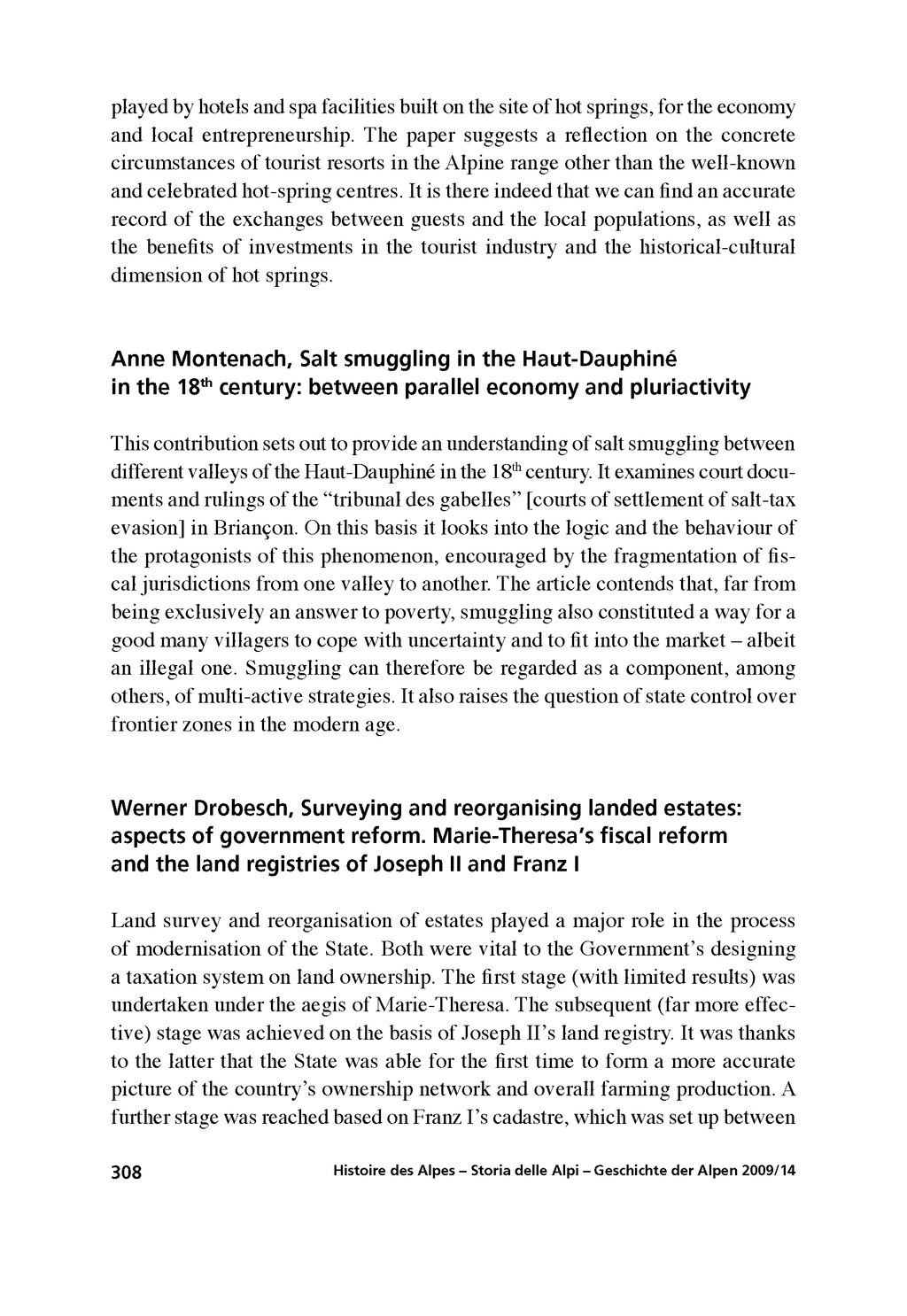played by hotels and spa facilities built on the site of hot springs, for the economy and local entrepreneurship. The paper suggests a reflection on the concrete circumstances of tourist resorts in the Alpine range other than the well-known and celebrated hot-spring centres. It is there indeed that we can find an accurate record of the exchanges between guests and the local populations, as well as the benefits of investments in the tourist industry and the historical-cultural dimension of hot springs.
Anne Montenach, Salt smuggling in the Haut-Dauphine
in the 18th century: between parallel economy and pluriactivity
This contribution sets out to provide an understanding of salt smuggling between
different valleys of the Haut-Dauphine in the 18th century. It examines court documents and rulings of the “tribunal des gabelles” [courts of settlement of salt-tax
evasion] in Brian$on. On this basis it looks into the logic and the behaviour of
the protagonists of this phenomenon, encouraged by the fragmentation of fiscal jurisdictions from one valley to another. The article contends that, far from
being exclusively an answer to poverty, smuggling also constituted a way for a
good many villagers to cope with uncertainty and to fit into the market - albeit
an illegal one. Smuggling can therefore be regarded as a component, among
others, of multi-active strategies. It also raises the question of state control over
frontier zones in the modern age.
Werner Drobesch, Surveying and reorganising landed estates:
aspects of government reform. Marie-Theresa's fiscal reform
and the land registries of Joseph II and Franz I
Land survey and reorganisation of estates played a major role in the process
of modernisation of the State. Both were vital to the Government’s designing
a taxation system on land ownership. The first stage (with limited results) was
undertaken under the aegis of Marie-Theresa. The subsequent (far more effective) stage was achieved on the basis of Joseph II’s land registry. It was thanks
to the latter that the State was able for the first time to form a more accurate
picture of the country’s ownership network and overall farming production. A
further stage was reached based on Franz I’s cadastre, which was set up between

